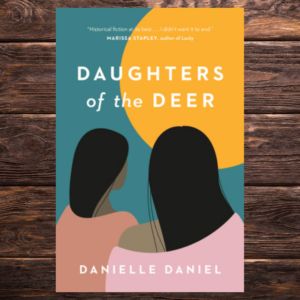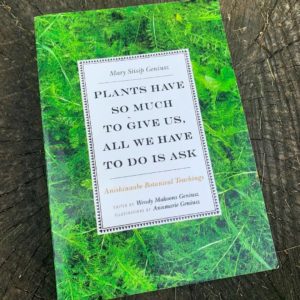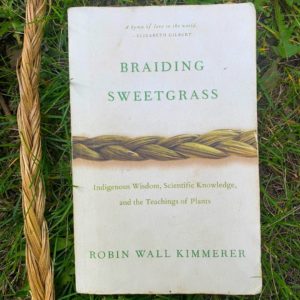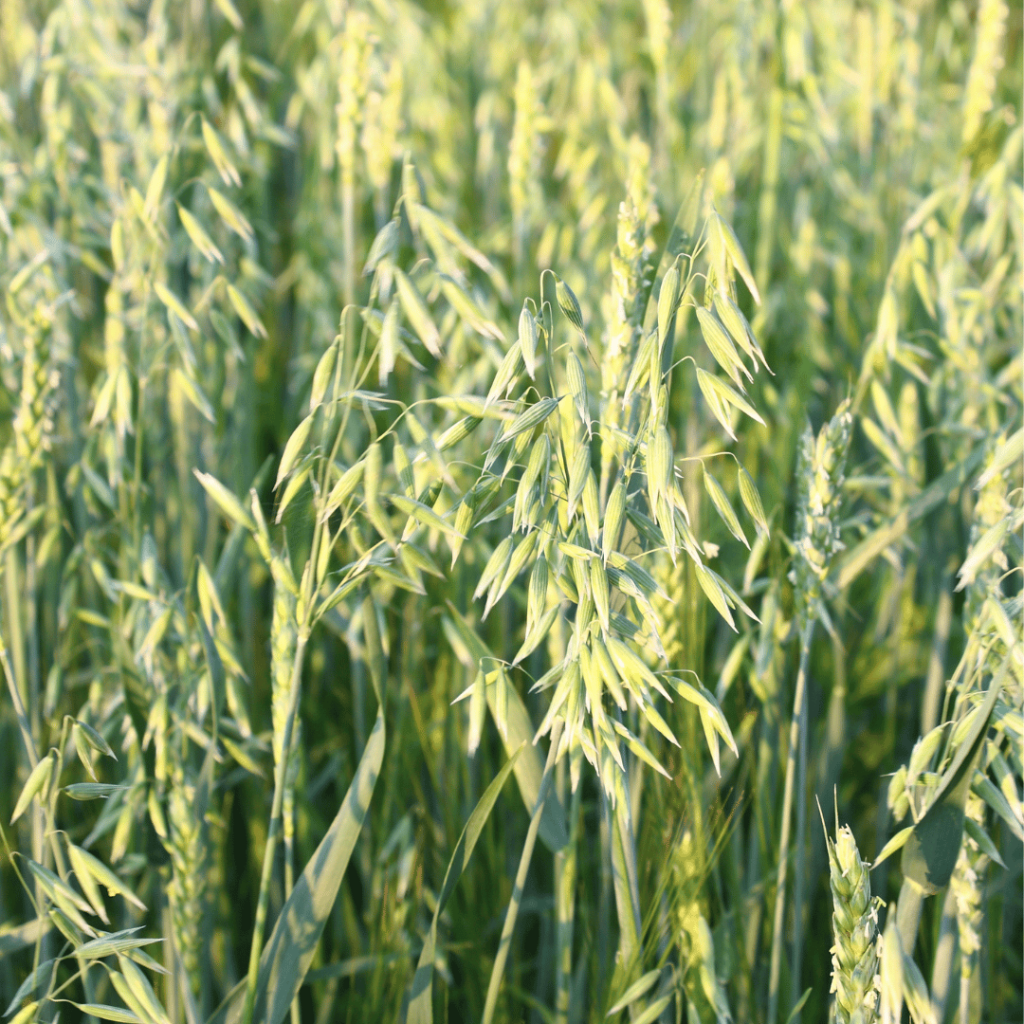- By: Dionne
- June 14, 2022

8 Essential Tips for Aspiring Herbalists: A Guide to Success
Embarking on a journey as an herbalist is a rewarding and fulfilling path, but it comes with its own set

Latest News
In honour of Indigenous History month, we wanted to feature some of our favourite Indigenous books and authors (and we have so many more!)
Because we are all hoping for the lazy days of summer (with a healthy dose of safe events and community gatherings, of course) we’ve included a healthy dose of fiction, with some more plant-focused non-fiction choices.
As a land-based college, we acknowledge that we are on traditional Indigenous Territory no matter where we teach from or where our students hail from. We feel it is important to share Indigenous plant use from Indigenous authors, teachers, and medicine people on our list this month, honouring the tens of thousands of years of traditional knowledge on this land.
To round things off of our top 10, we have included a few TikTok videos of Indigenous creators and allies who share their own must-reads by Indigenous authors.
Are you ready to dive in? Let’s go!
This one is sooo good. Technically written for young adults, this juicy work of fiction is where chemistry and Ojibwe traditional medicine meet in a whodunit to track down a murderer.
Protagonist Daunis Fontaine’s life is split between two communities: that of her white French Canadian mother and the other of the Sugar Land Ojibwe Tribe of her late father. This book has got hockey, it’s got cultural identity, it has mystery, medicine, and chemistry.
Need we say more?
“I took this book camping with me and had it finished in under two days! I couldn’t put it down and wanted more before it was even over.” – Dionne Jennings, Communications Manager
You won’t be able to put this one down either. I borrowed it from my partner’s aunt on Grey Cup night…and spent the evening gobbling up the book with just the odd check-in on the football action, much to the puzzlement of the Blue Bomber fans in the room. 😉
This is a post “power” world, where everybody has plunged off the grid–no communications, no energy, no transportation, no food. It follows a Northern Community and the effects of this shut down on the community of one rural reserve and how the city dwellers and non-Indigenous folks realize how valuable traditional knowledge and living off the land really is.
This one is a bit darker, and it would translate so well to the big screen–it would make for an excellent, suspenseful, and moody movie. 5/5.
Cherie Dimaline only ever intended to write “a” book–and that book was titled the Marrow Thieves. But alas, her fans had other plans for her.
The Marrow Thieves is set in a post-viral world that has suffered widespread climate change and natural disasters, where non-Indigenous folks have lost their ability to dream and create, leading to madness. The Indigenous survivors have not–and live off the land with what traditional knowledge they have as they are hunted and harvested for their marrow( which is believed to hold the cure).
This is a work intended for a young adult audience, but is extremely well written and relatable, with a variety of compelling characters with messages about the importance of language, family, culture, the land, and traditional teachings. Hunting By Stars is the long-awaited second follow-up–get them both so you don’t have to wait to see what happens to Frenchie, Isaac, Rose and friends.
 Danielle Daniel imagines the lives of her ancestors from the 1600s in Algonquin territory. The book was inspired by her familial ties to a girl who was murdered in the early French settlements of Trois Rivieres.
Danielle Daniel imagines the lives of her ancestors from the 1600s in Algonquin territory. The book was inspired by her familial ties to a girl who was murdered in the early French settlements of Trois Rivieres.
Marie, a Weskarini healer and recently widowed, is asked by the clan Chief to marry a white man. The Chief believes this is the best way to show the French their alliance against the British and Iroquois. The story moves on to Jeanne, the first child of the marriage who is caught between worlds, unsure of where she fits in and how her father and the settlers of New France look at her Weskarini gifts as something unnatural.
The book takes you along the journey of two women whose chances at happiness are destroyed by Catholic colonizers and the deliberate disruption of First Nations culture. This was a deeply personal book from the perspective of Indigenous women. It’s a raw, emotional and powerful read.
This is the story of a strong Métis woman named Joan Beausoliel as she searches for her beloved husband, Victor after he mysterious disappears–he leaves the house one day and just never comes back.
After discovering who she believes to be her husband in a suss revival tent in a Walmart parking lot (who seems to have a new identity as Reverend Wolff as well as no memory of her) she recruits help from her community.
With old Ajean, an elderly foul-mouthed card shark who is one of the few still knowledgeable about ancient enemies, and the help of her Johnny-Cash-loving, 12-yr old nephew Zeus, she goes to battle with the supernatural to get Victor back. This one is definitely a bit more adult-oriented than the Marrow Thieves series–so good but in such a different way. Another fast and compelling read with an old Métis legend that comes to life in contemporary times.
Another coming of age story, this one intertwined with a tale of the supernatural.
From Penguin House, the publisher:
“Meet Jared Martin: sixteen-year-old pot cookie dealer, smoker, drinker and son with the scariest mom ever. But Jared’s the pot dealer with a heart of gold–really.
Compassionate, caring, and nurturing by nature, Jared’s determined to help hold his family together–whether that means supporting his dad’s new family with the proceeds from his baking or caring for his elderly neighbours.
But when it comes to being cared for and loved, Jared knows he can’t rely on his family. His only source of love and support was his flatulent pit bull Baby, but she’s dead.
And then there’s the talking ravens and the blackouts and his grandmother’s perpetual suspicion that he is not human, but the son of a trickster.”
Highly recommended–there’s a reason they turned this one into a TV series.
 This is a beautiful book, and rare in that it is one that comes from a traditional oral transfer of traditional knowledge.
This is a beautiful book, and rare in that it is one that comes from a traditional oral transfer of traditional knowledge.
Plants Have So Much to Give Us, All We Have to Do Is Ask is a 30-year culmination of knowledge, lived experiences and Aanishnaabe teachings. Mary’s knowledge base comes from her years as an oshkaabewis, (a traditionally trained apprentice), and as a friend to the late Keewaydinoquay, an Anishinaabe medicine woman from the Leelanau Peninsula in Michigan. She is also a scholar, teacher, and practitioner in the field of Indigenous ethnobotany.
Geniusz records and shares Keewaydinoquays teachings (with permission) making traditional knowledge available to Indigenous folks who may not have access to elders or medicine people in their communities–and she does it through story.
“I recommend this book to anyone look to learn more about plant medicine. I love that the book contains not only the common and latin name, but also the ancestral name of each plant.” -Cherianne, Communications Coordinator
If you aren’t familiar with the beautiful artwork of Christi Belcourt, allow us to introduce you. 😉
Christi’s style is influenced by traditional Métis beadwork, and she lovingly renders traditional medicines on her large-scale canvases dot by colourful dot.
This particular book is based on her painting “Medicines to Help Us”, and honours the centuries-old healing traditions of Métis women. It features 27 prints and plants with Michif, Nêhiyawêwin (Cree) and Anishinaabemowin (Ojibway) names, and was written with contributions by Métis Elders Rose Richardson and Olive Whitford.
Indigenous women have long been leaders, healers, and wayfinders in their communities – caring for the people, lands, and waters for millennia. Despite this, Indigenous women’s knowledge has been largely invisible and undermined due to male-dominated structures.
This book is a compilation of essays which examine how patriarchy, gender, and colonialism have shaped the experiences of Indigenous women as both knowers and producers of knowledge. The essays explore the integral role Indigenous women have as stewards of the land and mentors of the community.
You can download a copy here for free.
 Robin Wall Kimmerer completely slays in this book that is meant to be read over and over. It’s a beautiful blend of Indigenous worldview meets Botany and Scientific Medicine–honouring the heart and the head, the “feminine” and the “masculine”.
Robin Wall Kimmerer completely slays in this book that is meant to be read over and over. It’s a beautiful blend of Indigenous worldview meets Botany and Scientific Medicine–honouring the heart and the head, the “feminine” and the “masculine”.
From Milkweed, the publisher:
“As a botanist, Robin Wall Kimmerer has been trained to ask questions of nature with the tools of science. As a member of the Citizen Potawatomi Nation, she embraces the notion that plants and animals are our oldest teachers.
Drawing on her life as an indigenous scientist and as a woman, Kimmerer shows how other living beings—asters and goldenrod, strawberries and squash, salamanders, algae, and sweetgrass—offer us gifts and lessons, even if we’ve forgotten how to hear their voices.
In reflections that range from the creation of Turtle Island to the forces that threaten its flourishing today, she circles toward a central argument: that the awakening of ecological consciousness requires the acknowledgment and celebration of our reciprocal relationship with the rest of the living world. For only when we can hear the languages of other beings will we be capable of understanding the generosity of the earth, and learn to give our own gifts in return.”
Her message is never more important than it is today.
It was so hard to keep it to 10…we have so many more we’d love to share! We’d love to hear from you about some of your favourite Indigenous authors or books, artists or movies….
Feel free to tag us on your social channels with #wildrosecollege so we can check them out.
We also want to make space for Indigenous creators to share some of their faves as well.
– Where to Begin with Indigenous Fiction + 3 Recommendations
– Queer Indigenous Non-Fiction
Plus…
– 5 Books You Should Read If You Own an Orange T-Shirt
You can check out a compilation of other books honouring Indigenous History Month Here.
And of course, there are many wonderful cultural in-person events happening throughout the month of June for Indigenous History Month…AND…it is Powwow season! We hope you are able to get out and enjoy and support Indigenous artists, creators, beaders, dancers, musicians, and more.
Enjoy,
Dionne Jennings

Embarking on a journey as an herbalist is a rewarding and fulfilling path, but it comes with its own set

Unlocking Vitality: A Holistic Approach to a Spring Cleanse – is your guide to a holistic spring cleansing, inspired by

Milky Oats: The Best Herb for Self Care In our fast-paced world, self-care is essential for maintaining balance, resilience, and